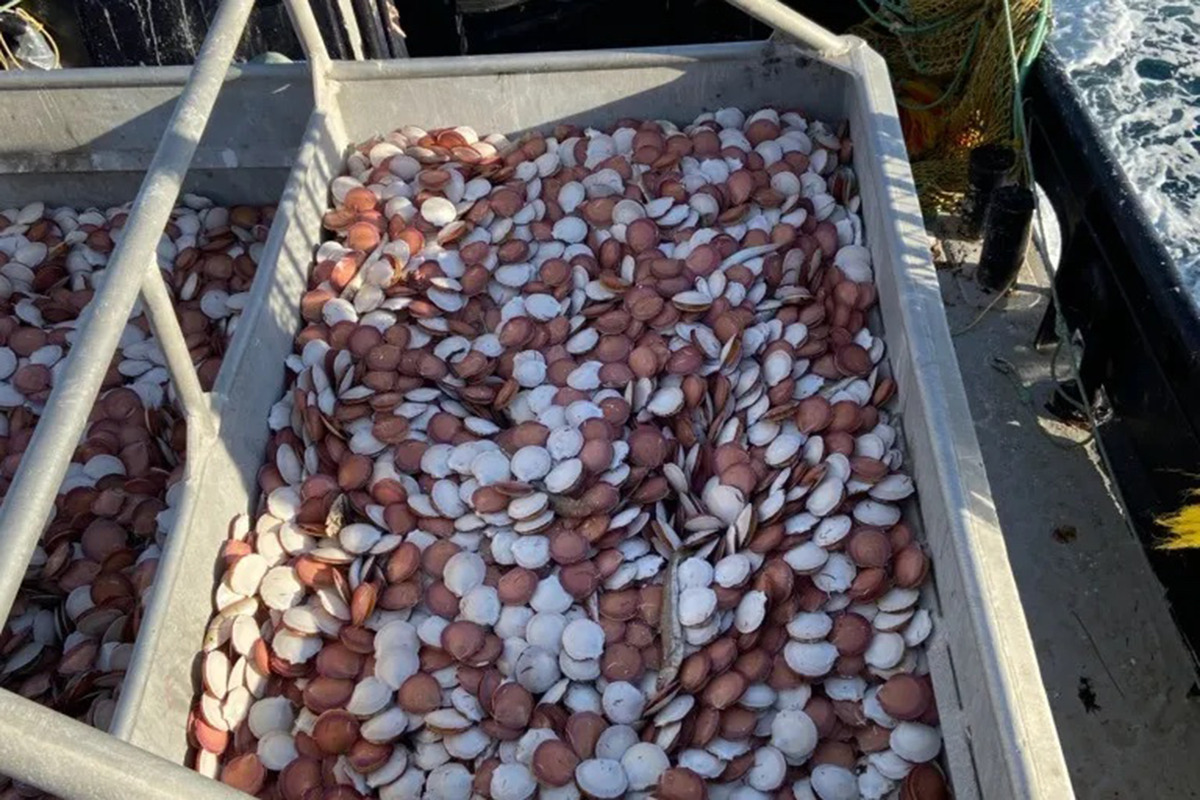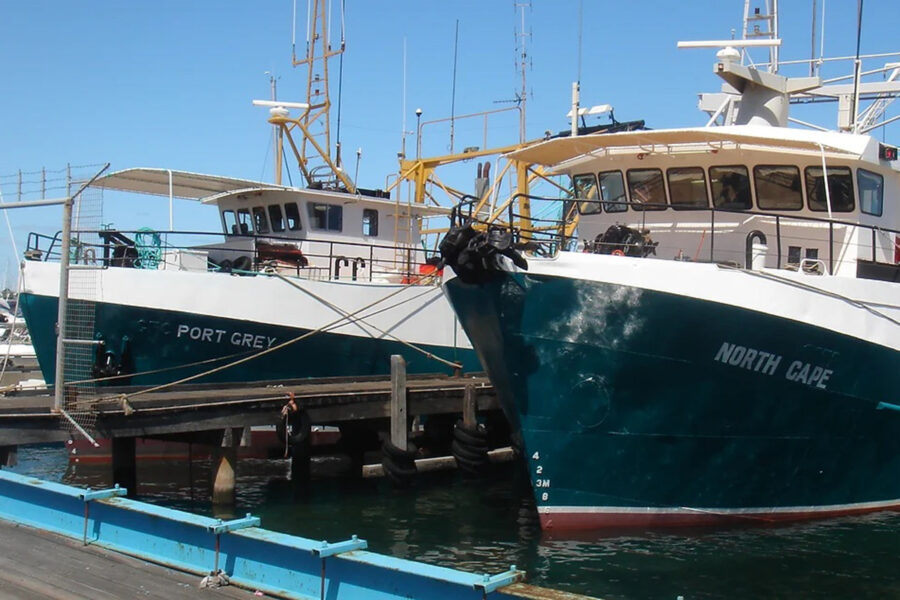Memories of the scallop fishery in Western Australian in the 1990s
I spent two seasons at sea in Western Australia in 1991 and 1992, shucking scallops on the same 17m vessel. In those days, it was the processing capacity of a vessel that dictated what you could land, rather than any fishing curfews or quotas.
It’s hard for us in the UK to realise just how isolated the small fishing ports of Western Australia are. Carnarvon, where I worked, was, and still is, home to a fleet of around 40 prawn and scallop vessels, plus a handful of trap boats. The nearest town of any size, another small fishing port, was Geraldton, 300 miles south, and equally isolated, with nothing but desert in between, and a roadhouse every 50 miles or so.
Back at the start of the 1990s, this really was wild west territory, with a real feeling of a gold-rush town. Normal rules didn’t apply; it was about everyone getting rich quick. Ninety percent of crew were up from the big city, Perth, with the expectation of working hard and partying equally hard when the money came in.
We were working small otter trawls off each beam, and at the start of the season, catching the scallops was the easy part. A five- or six-minute tow was all that was needed to provide scallops for three or four hours’ shucking. Gradually, over the season, the fishing time expanded, and four months later as the scallops thinned out, the net was constantly in the water and daily yields were coming down.

The Western Australian fishery is very clean. Catches from the twin trawls are emptied straight into a raised pound, where the shells then feed down to shucking stations.
We were a crew of 13, the maximum allowed by law. And yes, if you do the maths, on a 17m vessel, where hold space was at a premium, that is not a lot of room. We hot-bunked, working split shifts, as there was also only room for six people to sit down in the galley to eat.
The scallops themselves were midway between king scallops and queenies – large, but with light shells, and we cleaned them roe off. They averaged about 80 to a kilo. With no quotas, and the only limit on catching the speed at which the scallops could be processed, it was all about shucking.
Ten kilos of meat per hour, 18 hours a day, equates to cleaning 14 scallops a minute, every minute of every working day – and hauling and shooting the net on top of this, as well as operating the blast freezer. Two tonnes of meat per day was then weighed, bagged up into 1kg bags, packed up eight bags per box and stapled, ready for export to Singapore.
Three of our 13 crew were female, which was about the average then, although there was only one female skipper in the port. A 12t hold capacity meant that we had seven-day trips at sea, shucking scallops that were landed fresh all the way into harbour after the hold was full.

Part of the fleet based in Carnarvon, Australia, where scallops have been shucked at sea since the fishery first developed in the 1980s.
Shucking roe off was a simple operation, made harder by the temperatures – over 30°C most afternoons. The catch was very clean, so needed minimal sorting – mainly the removal of a few blue crab, shrimps and the odd crayfish, that were all landed as well.
The codends were landed straight onto a large pound, which fed to a shallower table where each shucking station had a chute for the old shell and any debris to be removed straight back over the side. There would be 10 crew shucking, the skipper in the wheelhouse, and then two cooks/packers, who would QC the scallop meats and bag into 1kg bags.
Bags were packed into trays for the blast freezer, which operated at -36°C. Every 12 hours, the 1t blast was emptied and the bags boxed up in the freezer room, which was at a steady -17°C. Boxing a tonne of product at -17°C before becoming too cold was tough work – but for me a welcome break from the monotony of shucking.
From an efficiency point of view, and looking at carbon footprints, relative to landing whole scallops in shell, the operation couldn’t be beaten. It was the reason for the huge profits being made – the shore side of the operation was basically a cold store, an office and a net store/chandlery.
No mercy was shown to crew who couldn’t keep up with shucking at speed. Eighteen-hour shifts would turn into 19 hours for slower shuckers, not allowed off deck until they had cleaned their quota. It was a regular sight to see crew falling asleep into their food at the end of a shift, and crew turnover at the start of the season was fairly brutal.
We were paid by the kilo for the meat produced, and the money was good, if you were quick. It all boiled down to 14 scallops a minute, every minute, for 18 hours a day, 7 days a week. In 1991 it was over £1,000 a week, if you were up to it.

The finished product being landed ashore, boxed up and ready for export.
We lost ‘Old Phil’ two weeks into the season. Old Phil just couldn’t keep up with the pace needed, and had to go. When he was paid off, he only got three- quarters of the standard rate. Old Phil was 36. Other than the skipper, he was the only crew member over the age of 30.
Turnaround in port was three hours – two hours to unload, take on stores and spares, and change the nets, which wore out alarmingly quickly. Then there was an hour off to collect mail, and have a shower, and a swift beer in one of the nearby pubs, before the taxi returned you to the harbour.
The steam back to the grounds was the best part. After getting the gear sorted, there were five hours to get your head down, if you’d drawn the lucky straw and had one of the six beds for the duration.
Every fourth week, we had 25 hours to relax ashore instead of one. I have yet to see a fisherman in the UK blow money in the imaginative, and mainly illegal, ways some of the Aussie crew managed. Forty- eight hours ashore would have killed them.
The wild west atmosphere was clearly coming to an end during my second season there, in 1992. Larger companies were buying up the licences, and the authorities were looking at heavier regulation of the fishery.
The final straw was an accident with our sistership, which saw the boat turn over when emptying overfilled codends. Five of the 13 crew died, including two backpackers with minimal fishing experience. The unwelcome attention of journalists and TV crews visiting the port saw one crew beaten up and their camera thrown into the harbour for asking too many questions – but the genie was out of the bottle.
The skipper of that vessel was not the first who was routinely providing amphetamines to his crew to keep them going. Their use was widespread across the fleet, as was the physical abuse of crew who couldn’t keep up with the shucking.
The Western Australian fishery has never seen the volumes landed in 1991/1992 since regulation was brought in – but the fishery continues. I’ve not been back. I can’t say I enjoyed my time at sea, but it was certainly a learning curve, produced a few great memories and friends, and set me up with enough cash to buy my first boat back in the UK.
This story was taken from the latest issue of Fishing News. For more up-to-date and in-depth reports on the UK and Irish commercial fishing sector, subscribe to Fishing News here or buy the latest single issue for just £3.30 here.
Sign up to Fishing News’ FREE e-newsletter here.








